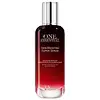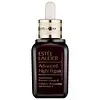What's inside
What's inside
 Key Ingredients
Key Ingredients

 Benefits
Benefits

 Concerns
Concerns

 Ingredients Side-by-side
Ingredients Side-by-side

Water
Skin ConditioningButylene Glycol
HumectantGlycerin
HumectantCaprylic/Capric/Succinic Triglyceride
EmollientAlcohol
AntimicrobialPolymethylsilsesquioxane
Maltitol
HumectantPEG-60 Hydrogenated Castor Oil
EmulsifyingPhenoxyethanol
PreservativePEG-32
HumectantPEG-8
HumectantDecyloxazolidinone
AntimicrobialAcrylates/C10-30 Alkyl Acrylate Crosspolymer
Emulsion StabilisingPEG-7 Glyceryl Cocoate
EmulsifyingTetrasodium EDTA
Parfum
MaskingMalva Sylvestris Extract
AstringentHibiscus Sabdariffa Flower Extract
Skin ConditioningFaex
Skin ConditioningSodium Hydroxide
BufferingLecithin
EmollientSqualane
EmollientPyrus Cydonia Seed Extract
MaskingAlcaligenes Polysaccharides
EmollientDimethylmethoxy Chromanol
AntioxidantAdenosine
Skin ConditioningXanthan Gum
EmulsifyingSorbitol
HumectantBiosaccharide Gum-1
HumectantSodium Metabisulfite
AntioxidantSodium Tocopheryl Phosphate
AntioxidantAlgin
MaskingAframomum Angustifolium Seed Extract
Skin ConditioningButylphenyl Methylpropional
PerfumingPolyvinyl Alcohol
Limonene
PerfumingHaberlea Rhodopensis Leaf Extract
Skin ConditioningBenzyl Alcohol
PerfumingCitric Acid
BufferingCellulose Gum
Emulsion StabilisingEthylhexylglycerin
Skin ConditioningAlpha-Isomethyl Ionone
PerfumingGeraniol
PerfumingLilium Candidum Bulb Extract
Skin ConditioningPhaeodactylum Tricornutum Extract
HumectantDehydroacetic Acid
PreservativeBHT
AntioxidantTocopherol
AntioxidantWater, Butylene Glycol, Glycerin, Caprylic/Capric/Succinic Triglyceride, Alcohol, Polymethylsilsesquioxane, Maltitol, PEG-60 Hydrogenated Castor Oil, Phenoxyethanol, PEG-32, PEG-8, Decyloxazolidinone, Acrylates/C10-30 Alkyl Acrylate Crosspolymer, PEG-7 Glyceryl Cocoate, Tetrasodium EDTA, Parfum, Malva Sylvestris Extract, Hibiscus Sabdariffa Flower Extract, Faex, Sodium Hydroxide, Lecithin, Squalane, Pyrus Cydonia Seed Extract, Alcaligenes Polysaccharides, Dimethylmethoxy Chromanol, Adenosine, Xanthan Gum, Sorbitol, Biosaccharide Gum-1, Sodium Metabisulfite, Sodium Tocopheryl Phosphate, Algin, Aframomum Angustifolium Seed Extract, Butylphenyl Methylpropional, Polyvinyl Alcohol, Limonene, Haberlea Rhodopensis Leaf Extract, Benzyl Alcohol, Citric Acid, Cellulose Gum, Ethylhexylglycerin, Alpha-Isomethyl Ionone, Geraniol, Lilium Candidum Bulb Extract, Phaeodactylum Tricornutum Extract, Dehydroacetic Acid, BHT, Tocopherol
Water
Skin ConditioningBifida Ferment Lysate
Skin ConditioningMethyl Gluceth-20
HumectantPEG-75
HumectantBis-PEG-18 Methyl Ether Dimethyl Silane
EmollientButylene Glycol
HumectantPropanediol
SolventCola Acuminata Seed Extract
Skin ConditioningHydrolyzed Algin
Pantethine
EmollientCaffeine
Skin ConditioningLecithin
EmollientTripeptide-32
Skin ConditioningEthylhexylglycerin
Skin ConditioningSodium Rna
Skin ConditioningBisabolol
MaskingGlycereth-26
HumectantSqualane
EmollientSodium Hyaluronate
HumectantOleth-3 Phosphate
Caprylyl Glycol
EmollientLactobacillus Ferment
Skin ConditioningOleth-3
EmulsifyingOleth-5
EmulsifyingAnthemis Nobilis Flower Extract
MaskingYeast Extract
Skin ConditioningCholeth-24
EmulsifyingHydrogenated Lecithin
EmulsifyingCeteth-24
CleansingTocopheryl Acetate
AntioxidantEthylhexyl Methoxycinnamate
UV AbsorberHexylene Glycol
EmulsifyingCarbomer
Emulsion StabilisingTriethanolamine
BufferingTrisodium EDTA
BHT
AntioxidantXanthan Gum
EmulsifyingPhenoxyethanol
PreservativeCI 14700
Cosmetic ColorantCI 19140
Cosmetic ColorantWater, Bifida Ferment Lysate, Methyl Gluceth-20, PEG-75, Bis-PEG-18 Methyl Ether Dimethyl Silane, Butylene Glycol, Propanediol, Cola Acuminata Seed Extract, Hydrolyzed Algin, Pantethine, Caffeine, Lecithin, Tripeptide-32, Ethylhexylglycerin, Sodium Rna, Bisabolol, Glycereth-26, Squalane, Sodium Hyaluronate, Oleth-3 Phosphate, Caprylyl Glycol, Lactobacillus Ferment, Oleth-3, Oleth-5, Anthemis Nobilis Flower Extract, Yeast Extract, Choleth-24, Hydrogenated Lecithin, Ceteth-24, Tocopheryl Acetate, Ethylhexyl Methoxycinnamate, Hexylene Glycol, Carbomer, Triethanolamine, Trisodium EDTA, BHT, Xanthan Gum, Phenoxyethanol, CI 14700, CI 19140
 Reviews
Reviews

Ingredients Explained
These ingredients are found in both products.
Ingredients higher up in an ingredient list are typically present in a larger amount.
BHT is a synthetic antioxidant and preservative.
As an antioxidant, it helps your body fight off free-radicals. Free-radicals are molecules that may damage your skin cells.
As a preservative, it is used to stabilize products and prevent them from degrading. Specifically, BHT prevents degradation from oxidation.
The concerns related to BHT come from oral studies; this ingredient is currently allowed for use by both the FDA and EU.
However, it was recently restricted for use in the UK as of April 2024.
Learn more about BHTButylene Glycol (or BG) is used within cosmetic products for a few different reasons:
Overall, Butylene Glycol is a safe and well-rounded ingredient that works well with other ingredients.
Though this ingredient works well with most skin types, some people with sensitive skin may experience a reaction such as allergic rashes, closed comedones, or itchiness.
Learn more about Butylene GlycolEthylhexylglycerin (we can't pronounce this either) is commonly used as a preservative and skin softener. It is derived from glyceryl.
You might see Ethylhexylglycerin often paired with other preservatives such as phenoxyethanol. Ethylhexylglycerin has been found to increase the effectiveness of these other preservatives.
Lecithin is a term for a group of substances found in the cell membranes of plants, animals, and humans. They are made up of mixture of phospholipids.
This ingredient has emollient and emulsifying properties.
As an emollient, lecithen helps soften the skin and creates a barrier to keep moisture in.
As an emulsifier, it also helps prevent water and oil ingredients from separating. Lecithin can also help ingredients be better absorbed by the skin.
This is because the phospholipids in lecithin produce liposomes. Liposomes help other ingredients get through the skin barrier.
Depending on the source of this ingredient, lecithin may not be fungal acne safe. This is because some sources of lecithin come from soybean oil, which may feed the malassezia yeast that feeds fungal acne.
We recommend reaching out to the brand you are purchasing from to inquire about the source of their lecithin.
Some other names for this ingredient include soy lecithin and deoiled soy lecithin.
Learn more about LecithinPhenoxyethanol is a preservative that has germicide, antimicrobial, and aromatic properties. Studies show that phenoxyethanol can prevent microbial growth. By itself, it has a scent that is similar to that of a rose.
It's often used in formulations along with Caprylyl Glycol to preserve the shelf life of products.
Squalane is an emollient that helps the skin hold onto moisture. It's an oily liquid that occurs naturally in certain types of fish and plant oils.
Because squalane boosts hydration in the skin, it also comes with plenty of benefits: it is an antioxidant and can help fight free radicals and skin damage. Squalane is also found to have a detoxifying effect when applied.
Squalane comes from squalene, which occurs naturally within the sebum of our skin. It is one of the oils our skin produces to keep itself hydrated. Squalane is the hydrogenated version of squalene and has a longer shelf life.
Research shows that squalane is non-irritating (even at 100% concentration).
In general, it's a fantastic ingredient. It does a great job at hydrating the skin, and it's suitable for those with sensitive skin.
The source of squalane may impact malassezia / fungal acne. This is because olive oil derived squalane can contain impurities such as fatty acids and plant waxes. Sugarcane derived squalane is recommended for anyone with malassezia concerns.
Is squalane vegan?
This depends on the source. Squalane can be derived from both plants and animals. Most squalane used in skincare comes from plants.
Please note: the source of squalane is only known if disclosed by the brand. We recommend reaching out to the brand if you have any questions about their squalane.
Read more about squalene with an "e".
Is squalane an oil?
Squalane is often called an oil, but it’s technically not; it’s a hydrocarbon, meaning it’s only made of carbon and hydrogen, unlike true oils which are triglycerides made of fatty acids and glycerol.
The term “oil-free” isn’t regulated, so companies can define it however they want. Some exclude all oils, while others just avoid mineral oil or comedogenic oils.
While some people avoid oils thinking they cause breakouts, the right kind of oil (or oil-like ingredient like squalane) can actually help balance and hydrate your skin. It’s worth testing out simple oils or squalane to see what works best for your skin.
Learn more about SqualaneWater. It's the most common cosmetic ingredient of all. You'll usually see it at the top of ingredient lists, meaning that it makes up the largest part of the product.
So why is it so popular? Water most often acts as a solvent - this means that it helps dissolve other ingredients into the formulation.
You'll also recognize water as that liquid we all need to stay alive. If you see this, drink a glass of water. Stay hydrated!
Learn more about WaterXanthan gum is used as a stabilizer and thickener within cosmetic products. It helps give products a sticky, thick feeling - preventing them from being too runny.
On the technical side of things, xanthan gum is a polysaccharide - a combination consisting of multiple sugar molecules bonded together.
Xanthan gum is a pretty common and great ingredient. It is a natural, non-toxic, non-irritating ingredient that is also commonly used in food products.
Learn more about Xanthan Gum